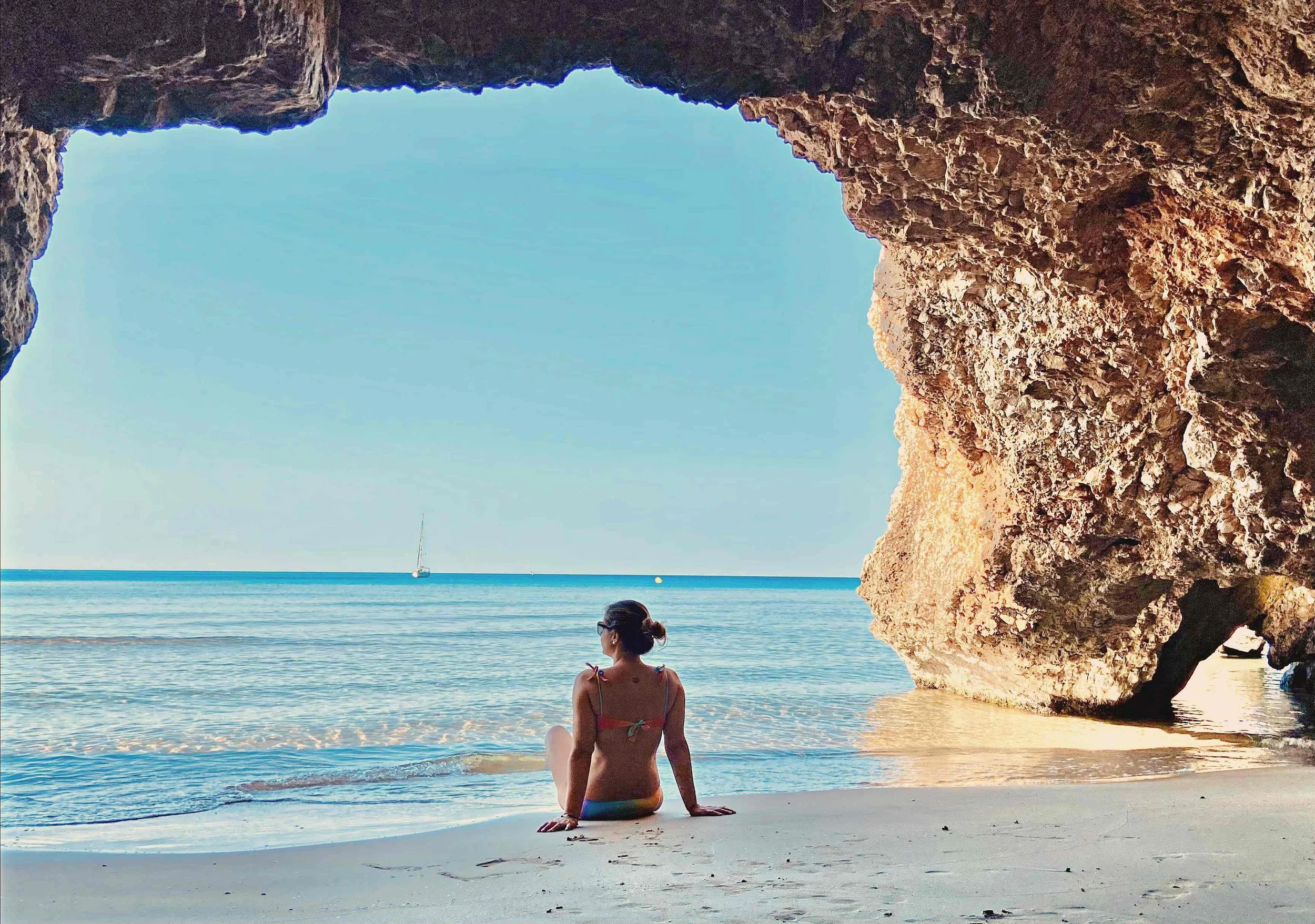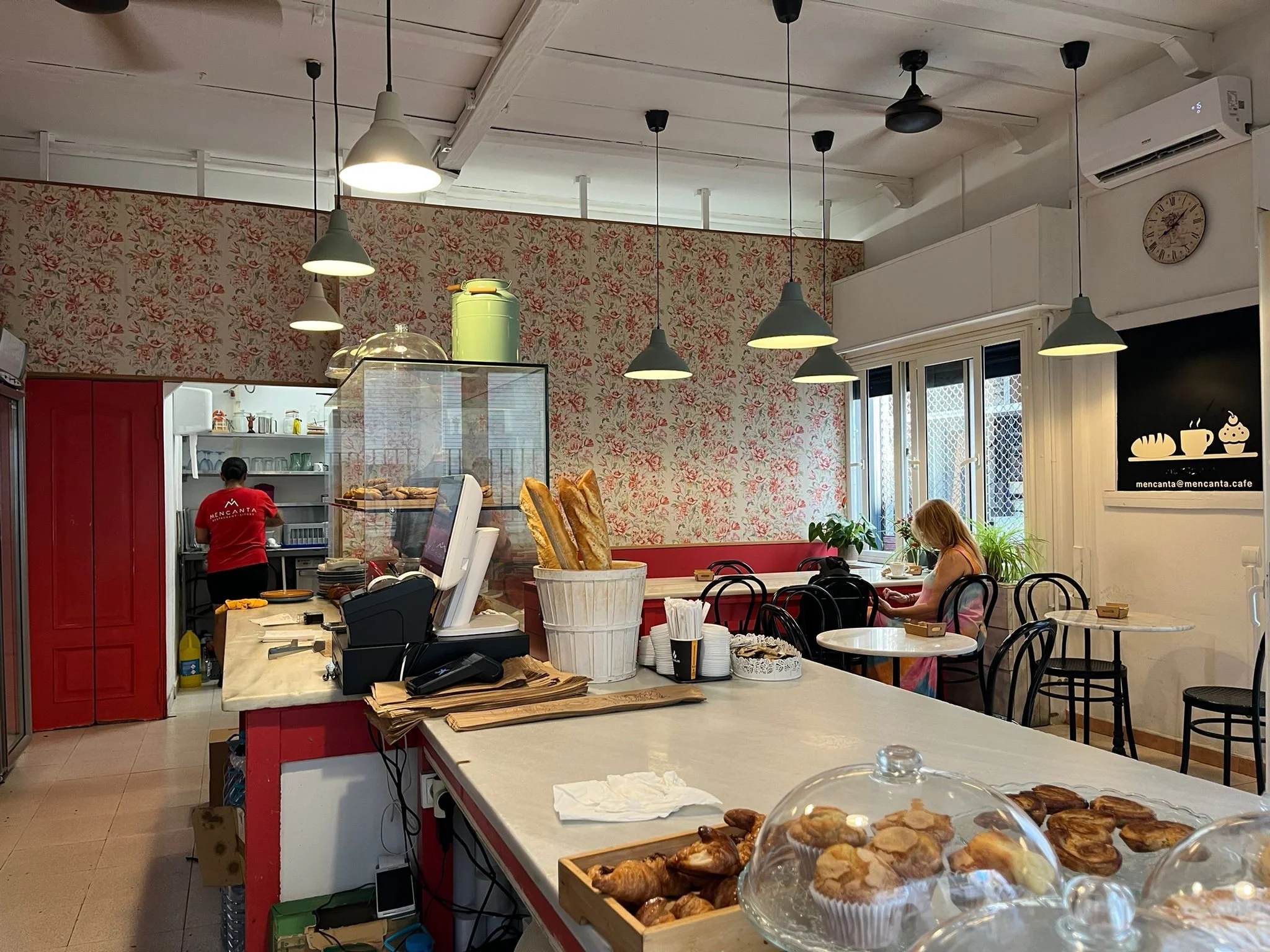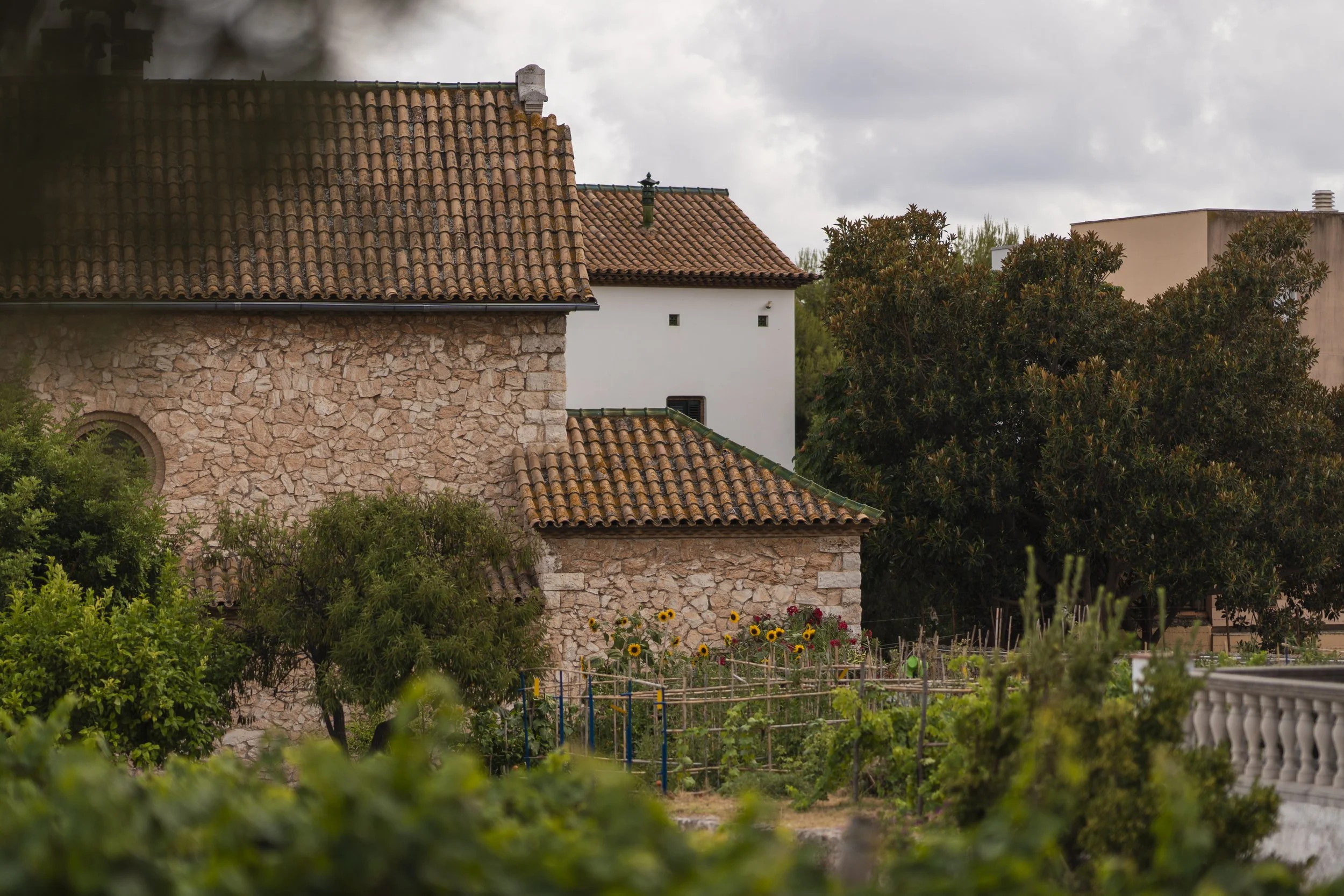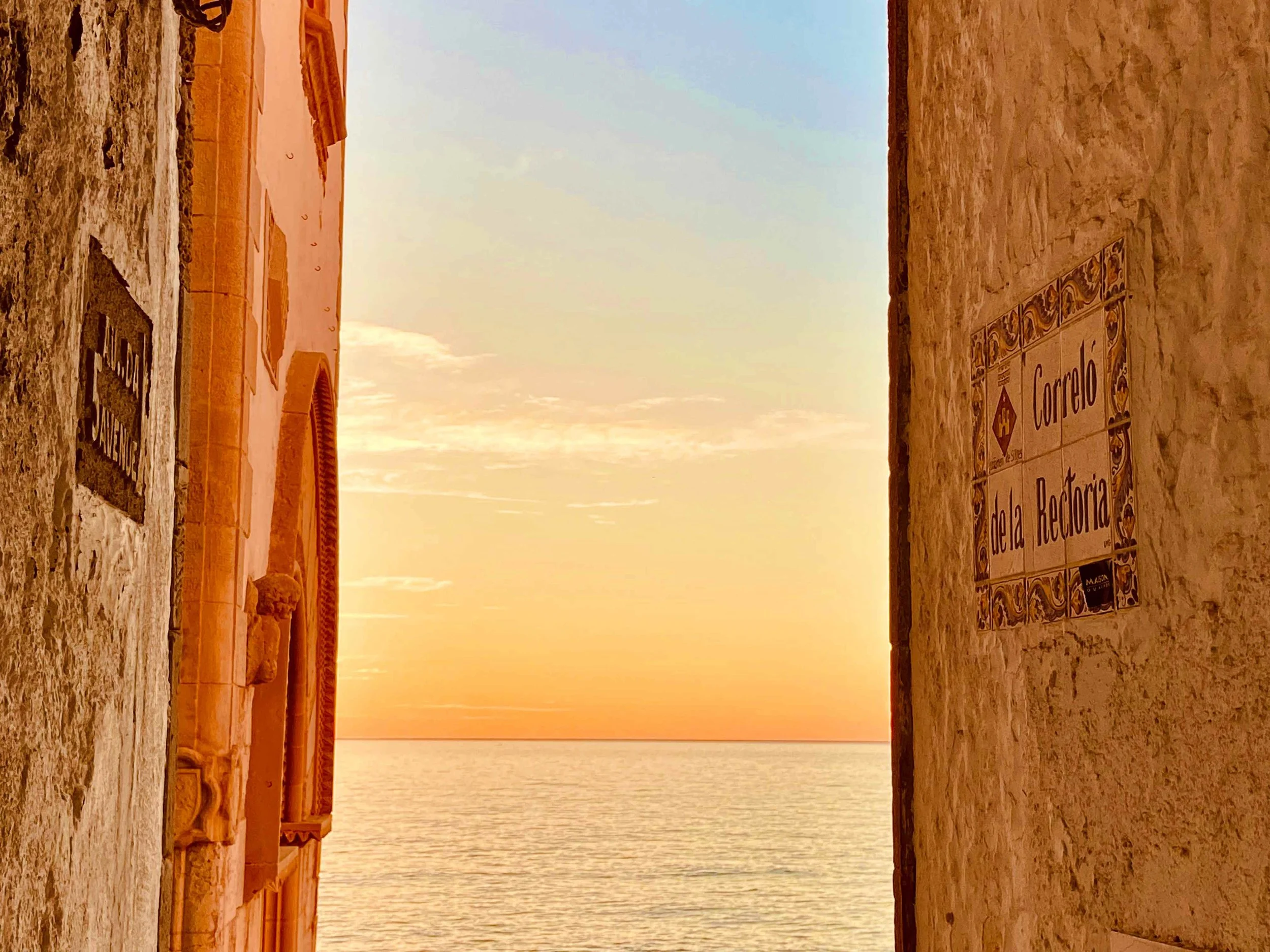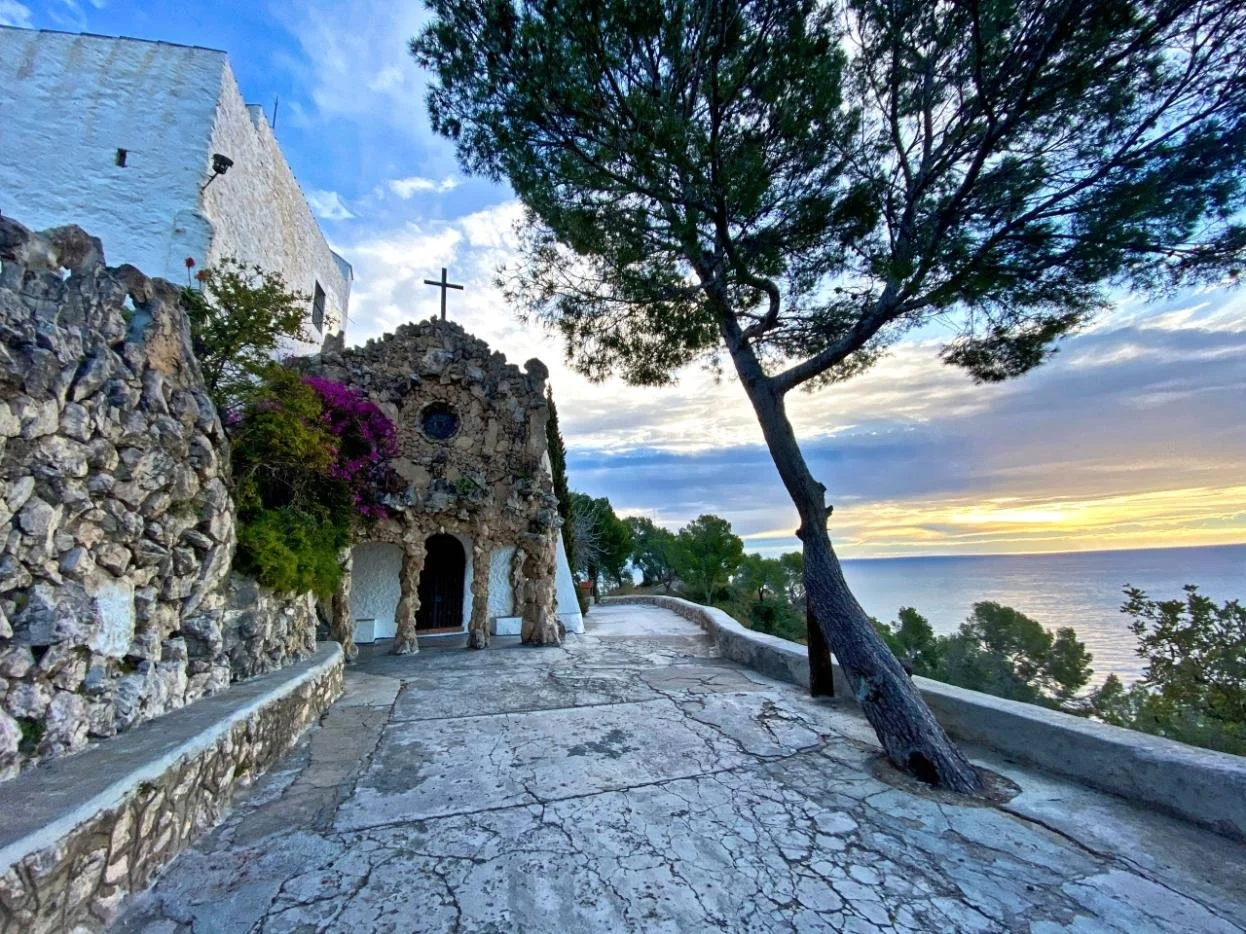Sitges Travel Guide: Kyra’s Off the Beaten Track Favorites
Beyond the beaches and film festivals — discover the Sitges locals know: vineyards, hidden coves, and Catalan charm.
We won’t reveal OUR favorite place in Sitges, but Kyra from @TheGuideSitges has awesome tips for you!
Who better to share the best of Sitges than the locals? We’ve partnered with @TheGuideSitges, a great go-to resource for all things Sitges, to bring you their top tips. From hidden spots to iconic events, here’s everything you need to know — straight from the experts.
Our former tiny fishing village of Sitges, once surrounded by winemakers and farmland, is now one of the most prestigious cultural jewels in the crown of the Catalan coastline south of Barcelona.
Sitges is a heady mix of Catalan Art Nouveau architecture, world-class museums, gastronomy, boutique shopping, LGBTQ+festivals and nightlife, and it is known as an eternal cradle of the arts — especially film, sculpture, and painting.
Boasting 11 unmatched city beaches and a microclimate with sunshine for 320 days a year, not only is Sitges a town-sized gem with all the amenities of a much larger city, it’s a homestead where international expats, the wealthy Catalan chattering classes and LGBTQ+ couples of all nationalities come together in accepting, party-loving exuberance.
Penguin Trampoline tip:
Sitges doesn’t just throw a Pride — it lives it all year long. From rainbow crosswalks to LGBTQ-friendly bars, this postcard-perfect town makes everyone feel welcome. Curious? Check out our full guide to Pride and LGBTQ+ hotspots in Sitges here.
Off the beaten track in Sitges, Catalonia with @TheGuideSitges
Although increasingly blighted by mass day tourism which sees large tour groups doing hit-and-runs on the main sites, Sitges retains many places off the beaten track for discovering unforgettable corners that you would only find if you knew where to look. That’s what this guide is all about. But if you come, share these secret places carefully — they are not for those who seek a McDonalds in every city they visit (we don’t have one!) or ask for the menu in their home language. A visit to these sites is an invitation to slow down, get comfortable with not understanding everything, and being okay with that. Drink the experiences in, and enjoy la vida “Mediterraneamente” - savouring place, taste, and feel.
Here’s a rundown of some experiences that not everyone will get to know about, gathered specifically for readers of Penguin Trampoline:
1. Breakfasting in the splendor of a turn-of-the-century mansion
On any summer morning, between 8.30 and 10.30, you can have a simple breakfast to order in the gardens of the Sitges Royal Rooms hotel: picture yourself sat in a central oasis of green, nibbling on your french omelette, toast, or croissants to the sound of trickling fountains, with an immaculate view of the hotel — also known as the Antoni Carreras i Robert house, it was was built in 1908 and is the work of the Barcelona architect Eduard Mercader y Sacanella. It is the most typical setting if you want to imagine the high-society vibe of Sitges in its artistic and architectural heyday.
The hotel's resident canine butler, Bey, is usually asleep on the side, fringed by greenery to help him manage the heat. You’re guaranteed to leave feeling as relaxed as that sleeping doggy.
2. An early morning cuppa with the locals
The little café M’encanta, tucked away on a street corner near the Sant Sebastià beach is easy to walk right past, and indeed is closed after 1.30pm, but with good reason: they open at 6.30am. For those larks among us, it’s one of the most peaceful spots to grab a coffee and a fresh-out-of-the-oven croissant or pain au chocolat (they're called napolitanas here) whilst coming across some of the real faces of Sitges starting (or maybe finishing) their work days: expect to see local police officers, besuited office workers before they catch their train to Barcelona, or street cleaners and teachers.
It’s the perfect quiet spot to have a go at reading El Eco de Sitges, the local newspaper, or La Vanguardia, if you’re more conversant in Castellano. Service here is always friendly and unobtrusive.
M’encanta in Sitges — Photo by @TheGuideSitges
3. Taking a walk through the Sitges vineyards to the Celler de Can Pagès
Not too many folks know that at the top end of town, above the latest 5-star hotel from the Autograph Collection chain, up above the multi-million-euro plots of land for new homes on the crest of the hills above the Avenida Sofia, there is a small, scrubby entrance to a magical portal. There you’ll find a dirt track through pine forests that, if ventured, will lead you in under 10 minutes to a Tuscan-like intersection of vineyards. The vistas are complete with cypress trees and a couple of marvellous church towers in the distance.
But before you reach those towers, which are from the Parochial church of Sant Pere de Ribes, crossing the main road on your right there is a sign for the tiny hamlet of Les Torres, home to the Celler de Can Pagès “agrobotiga”, or farm shop, the stuff of dreams for those of us who love a farmer’s market. The family business was originally winemaking, but they have since branched out into selling fresh produce - from lettuces and sweet peppers to giant squash, eggplants and even dried pulses like cannellini beans and lentils. Olive oil from local farms, white wine vinegar, local jams, jellies and pickles sit side by side with enormous barrels of their own wines — of which there are sparkling, red and white varieties. It’s a place to go and remember what doing your weekly shop might have looked like in 1885: and it’s incredibly wholesome and fulfilling to do so. (Beware: if you’re walking back to Sitges with your haul, you might want to consider a backpack or a taxi home).
4. Tasting emblematic Sitges wines inside the town’s most central vineyard
Have you ever heard of La Malvasia de Sitges, a white grape variety used to make several kinds of dry, sparkling and sweet dessert wines? Neither had we. Nor did we realise until living here for more than 3 years that there was a vineyard that could be visited not more than 5 minutes’ walk from the central train station. The Centre d'Interpretació de la Malvasia de Sitges is a museum, but much more besides - it’s a piece of living history that has a social compromise with the neighboring Hospital de Sant Joan de Baptista, a residence for around 100 elderly people living out their golden years in a community fringed with organic gardens, modernist architecture and of course the (locally) famous grape.
At this cultural highlight you can tour the museum and vineyards in English, Spanish or Catalan, enjoying a tasting of their best-selling wines at the end. In summer you can do the tasting in their charming walled garden, in winter, a slick conference -style room will do the trick. More than giving a real treat to your palette, and knowing more about an underrated set of wines, you’ll also be supporting funded residence places for low-income older folks with your ticketed visit to this registered charitable organization.
Malvasia vineyard and museum — Photo by @collectivecreatorlab & @charlotteweberphotography
5. Coffee and cake with a view untouched since 1885
Sitting squarely on Plaça de l’Ajuntament, or the town hall square, Sabaté café is an institution largely unchanged since what feels like 1970. Its brown interior is not the main appeal, nor is the quality of the coffee or even the pastries, but this is a privileged view of one of the most interesting intersections in town - the square, the end of the Carrer Major, close to the beautiful public library, an oft-overlooked necessary stop on any arty tour of Sitges, as it was once the former home of the artist Miquel Utrillo, and backs on to the spectacular Palau Maricel, now a romantic museum filled with architectural wonders.
It is possibly the café most at the epicenter of the historic part of Sitges that asks - no- demands- that you take a seat at the front, order a drink, and watch the world go by, taking notes in your artists’ sketchbook or journal, feeling the sea air and very particular light of our town enliven your latent creativity.
From Plaça del Ajuntament (Sabaté), take the “5th avenue” to get to this view…
6. A hike in the Garraf hills to L’Ermita de la Trinitat
Around 4km from the bustle of the town, up the increasingly steep winding coastline road that doubles back towards the Garraf mountains, then down a smaller path fringed with mediterranean scrub and the deafening sound of cicadas (in summer), is the tiny chapel (Ermita) of la Trinitat, dating from 1375 and now a part of Catalonia’s architectural and cultural inventory. A hike here is middling in intensity, requiring good footwear, ample water and an early start in summer (temperatures and humidity climb to uncomfortable heights in June, July and August), but you will be duly rewarded with views of the glittering sea and Sitges and Vilanova oft-not seen even by locals.
The shortest access is through Levantina, but for a longer walk, you can start from the Garraf Natural Park access at the top of Cami de la Fita or even from Quint Mar (spoiler alert: it’s steep).
🧭 Plan Your Sitges Escape
🏨 Find boutique stays on Booking.com — near beaches or vineyards.
🚗 Rent a car on Rentalcars — explore Garraf’s coastal roads.
🧭 Heymondo Travel Insurance (5–15% off) — because sangria and hiking don’t always mix.
Beat the crowds and heat: Hike to Trinitat early in the morning
🌴 FAQ — Sitges Travel Guide
How do you get to Sitges from Barcelona?
The easiest way is by train — around 35 minutes from Barcelona Sants. You can also drive or take the coastal bus through Garraf for stunning views.
When is the best time to visit Sitges?
Spring and early autumn are ideal — warm weather, fewer crowds, and perfect swimming temps. Summer is lively but packed.
Is Sitges expensive?
It’s pricier than nearby towns but cheaper than Barcelona. You’ll find boutique hotels, good tapas spots, and local markets that won’t break the bank.
What is Sitges known for?
Its film festival, lively nightlife, LGBTQ+-friendly scene, and long golden beaches — but also vineyards, hiking trails, and small art museums that most visitors miss.
Can you swim year-round in Sitges?
Almost! Locals swim from April to November. Winters are mild but breezy — ideal for walks along the promenade rather than dips in the sea.
These, and other tips about local life can be found on our instagram, @TheGuideSitges, alongside posts about the daily and weekly to-ings and fro-ings of cultural life in this little town that punches above its weight in terms of festivity, tradition, and friendliness. Follow us there and tell us where else you find, off the beaten track, during your visit.
This guest article was written by @TheGuideSitges, a trusted source for travel tips, local events, and hidden gems in Sitges.
Want to discover more awesome locations in Catalonia? Read our articles below:
🌋 5 Things to Do in La Garrotxa – The Unknown Catalonia
⛰️ 6 Things to Do in Espot – The Best of the Spanish Pyrenees
🐟 Costa Dorada’s Hidden Gems: Beaches, Tuna Dives, and Nature Escapes
🌈 LGBTQ+ Sitges – Celebrate Pride in a Postcard Town
🏖️ 8 Hidden Beaches Near Barcelona You’ve (Probably) Never Heard Of
🏝️ Off the Beaten Path: Formentera, Sardinia & Costa Brava

